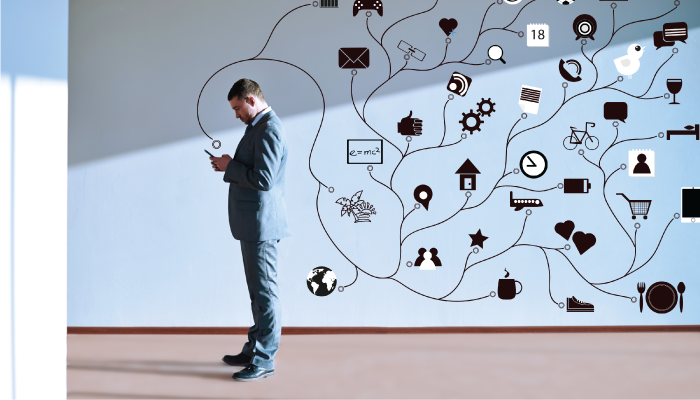Overall IT spending is on the rise and much of that is due to the #1 spending growth category: Software. IT spending on software grew by 8.6% in 2017 and is expected to continue leading IT spend growth in 2018 per recent Gartner reports. Researchers have found that the average cost of unused software within companies comes to about $259 per desktop. Over the course of a year, that average accounts for a 37 percent waste per company, whether due to a lack of communication or a poor asset management program.
No matter if your business is a small startup or a global enterprise, throwing that much money out of the window on unused resources is enough to make anyone weary of software. Add on the additional costs of hardware, software maintenance, security audit costs, and any potential fines you may see should you not be in compliance and it might make you want to run for the hills. However, this does not have to be the case.
One of the best ways for any-sized organization to avoid the costs of unused software and crippling legal fines is to have a strong software license management capability.
What is Software License Management?
Software license management, or SLM, is part of overall software asset management (SAM) capability and involves the process of reducing, documenting, and controlling total IT costs. In short, SLM is a plan to help you monitor and maintain all your organization’s various software licenses.
Types of Software Licenses
Virtually all software has some type of license attached, whether the program is installed directly on the desktop or digital device, is part of an expensive enterprise license suite, or part of the complex data center eco-system. One of the first steps you must take in license management is to understand your contractual terms related to the type of software licenses your company is using.
License types vary by platform and are somewhat standardized, though vary by an organization’s and vendors’ negotiated contracts. Typical types include:
- Per device or CPU: only intended for a single machine whether it is an end user or data center device
- Per user: restricted to one specific user who can use it on multiple devices (like their desktop and laptop), requires the user to log in to confirm their identity
- Per network: covers all machines that are on a single specific network
- Per subscription: managed by a subscription for user or device, usually has an expiration date
- General Public License (GPL): covers software that comes with no charge and can be used, shared, copied, and modified for free (freeware)
- Database: While often aligned to device, database licensing types demand special consideration due to the high cost and complex licensing constructs that differ by vendor and may include number of servers or cores, running versus installed databases, ‘all you can consume licensing” and others. Compliance and true-ups are also complicated by the deployed models that include high availability, fail-over and pluggable databases. Vendors change their models frequently and staying in tune with the marketplace to ensuring ongoing compliance can be time an arduous, ongoing task.
Benefits of Software License Management
A huge advantage for your company to have all software licenses under control is to save money. As mentioned earlier, the average cost of unused software is $259 per desktop, quickly sucking up your IT budget and wasting precious resources. By tracking and monitoring all purchases, you are ensuring that each license is accounted for and is being used.
The biggest benefit of SLM, however, is that it is a critical part in ensuring all software products are following compliance with software licenses (also known as an End-User License Agreement, or EULA). If you even have one device that is using unlicensed software, or is not following specific guidelines set by the EULA, you could be in for some hefty fines or even legal trouble.
Risks of Poor Software License Management
The Business Software Alliance is a global industry organization whose mission is to advocate for legal software use and enforce compliance among businesses. To fulfill this duty, the BSA regularly conducts court-ordered audits at organizations to ensure they are compliant with all software licenses, no matter if they are small mom-and-pop shops, massive enterprises, academic institutions, or government agencies.
When you purchase software, it is necessary to remember that you only have the right to use it under the terms of the EULA, you don’t directly own it. Should the BSA, or any other auditor, find that you have disregarded the terms of the agreement, you are potentially exposing your company to thousands, or millions, of dollars in penalties. In fact, the average fine for noncompliance is around $100,000 per noncompliant license.
Many license contracts are written today to avoid the legal implications of non-compliance and diminish the concerns regarding BSA, while allowing vendor audits to adjust your licensing position through a “true-up” process. While these types of contractual agreements help avoid legal implications and penalties, these true-ups often result in a significant and surprising expense not accounted for in annual budgets. In a recent study, IDC noted that 56% of customers with true-up contracts were handed true-up bills (21% for a million dollars or more)1. Additionally, customers are also often required to dedicate significant time and resources simply to prepare for these types of audits.
It is highly recommended to have regular internal audits to cover all of your bases before someone like the BSA comes in. By properly managing all software usage and licenses, you are eliminating the risk of negative audit results, unexpected penalties, and other possible damage.
Software License Management Best Practices and Practical Considerations
There are many things you can do to ensure that your company does not take unnecessary risks when it comes to managing all your software licenses.
Here are some software license management best practices:
- Strong Policies: Create a software management policy that is clear and explicit that helps you to establish clear controls needed to effectively manage your software assets as well as avoid common pitfalls.
- Clear Controls: At a minimum, set enforce-able controls regarding software usage within the company and outline strict guidelines on who is authorized to install or purchase software. A good practice here is to “control the front door” through digital storefronts and restrict the ability for users to download or install software. With today’s handheld and mobility revolution and end-user app-stores, this becomes more of a risk to the enterprise and your company.
- Process and Governance: Establish roles and processes to manage the hardware and software lifecycle. Effectively communicate, implement and manage the software asset policy and enabling processes.
- Automated Discovery: Regularly discover your hardware and software in all network environments and audit every type of software that is installed on employees’ desktops. Physical audits should be established in addition to automation. Data quality is an underpinning capability to success.
- Asset Management and your CMDB: In addition to discovery, manage the lifecycle of your assets to ensure data quality. Ensure your CMDB and Asset systems contain a robust data model that meets the needs of all your hardware and software assets.
- Automated Provisioning and Audits: Perform regular checks and deploy the latest software updates.
- Reclaim: Return used hardware and/or automatically uninstall unused software and applications after a prescribed period and returning them to your inventory for reuse.
- Trace-ability: Keep track of how applications are being used and who is using them. Integrate this usage with your on-boarding and off-boarding processes. A good practice here is to ensure your provisioning automation for both end users and the data center not only records the software usage and owners, but also initiates ongoing discovery to enable comparison of your “book” understanding to a “discovered” understanding.
- Contracts Integration: Utilize or integrate your contractual databases or procurement records to establish a clear understanding of your licenses. Be sure to know your license types, quantity, and expiration dates.
- Optimize through Automation: Consider utilizing the expertise of best-in-class license management automation that leverages a robust product catalog with a full understanding of common software vendor licensing profiles to avoid having to manually reconcile your license position to your installed software. Be a step ahead of your software vendor! The manual labor and cost of a compelling event such as a major software true-up can often justify cost of automation.
- Measure Your Outcome: Set targets and measure progress against license cost saving goals.
Conclusion
Forrester estimates roughly 10 – 20% of IT software costs result from lack of effective software controls being in place. If you are a CIO or other leader in IT you might ask yourself: “If I could conservatively save 10% of my annual software costs, what implication does that have on my ability to impact the company’s bottom line?”
Whether you are a small start-up or a global enterprise, strong asset management is vital to your business and company budget. By following proper software license management practices, you can adapt quickly to market needs, maximize your company revenues, and most importantly, maintain compliance, ensuring protection of both your assets and your company reputation.
How BMC Can Help
While the importance of proper software license management can be easy to see, the journey to getting there may seem overwhelming. Let the experts from BMC Software help identify the capabilities you need and help you establish the right program to achieve your necessary outcomes.
1 “CFO’s Beware — Companies Often Pay Unbudgeted Software License True-up Fees in Excess of $1 Million According to Flexera Software/IDC Survey.” Flexera, 29 Apr. 2014, www.flexera.com↩
These postings are my own and do not necessarily represent BMC's position, strategies, or opinion.
See an error or have a suggestion? Please let us know by emailing blogs@bmc.com.






